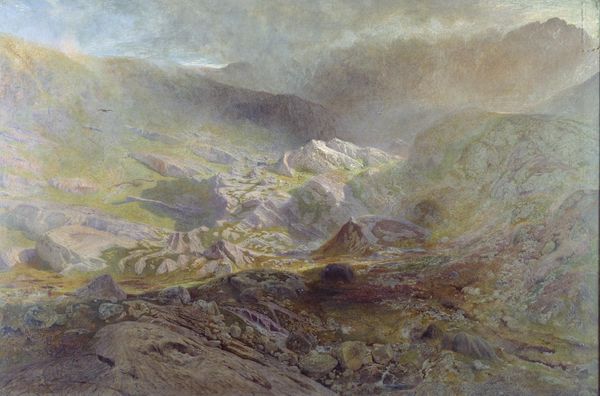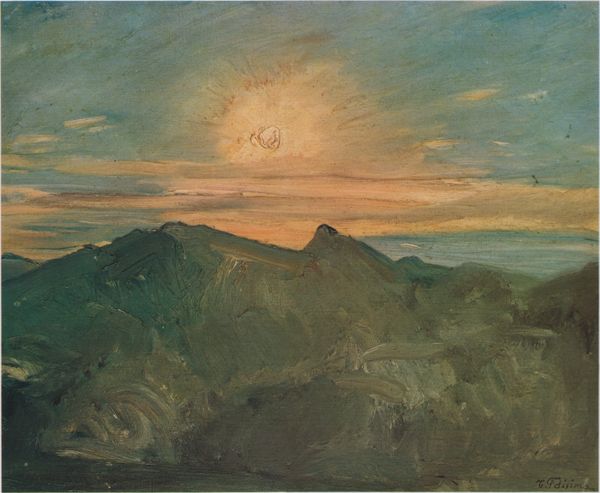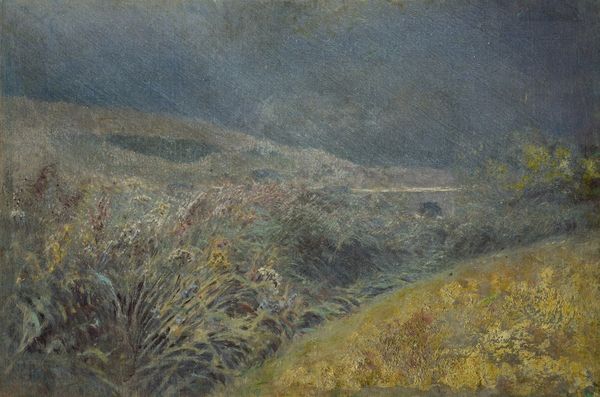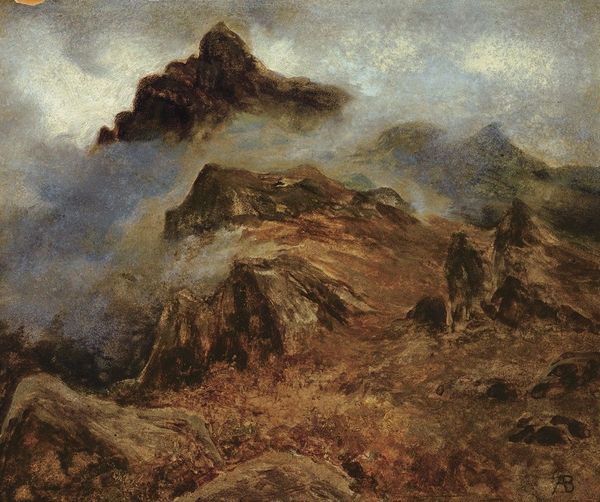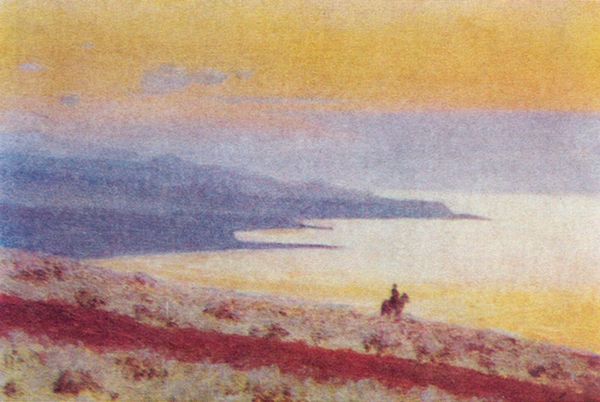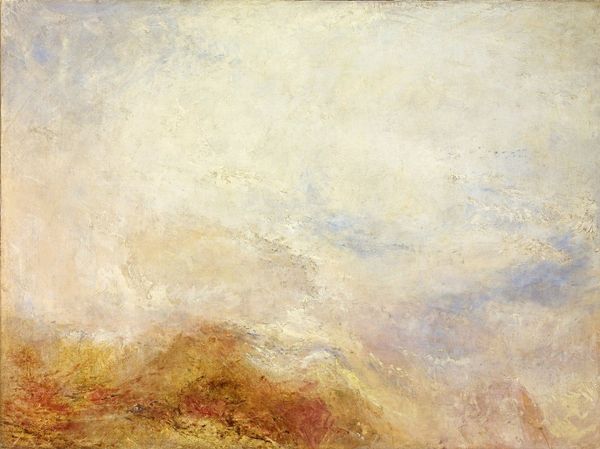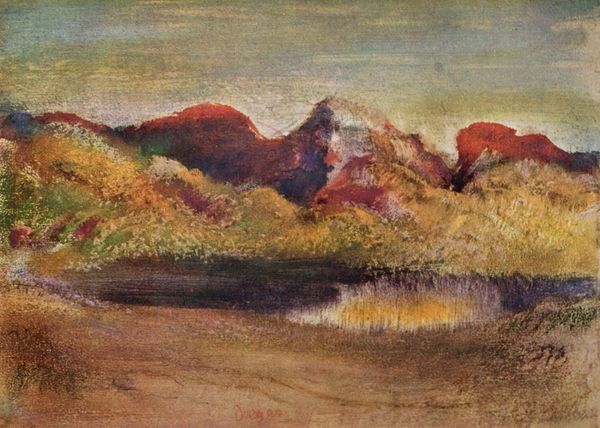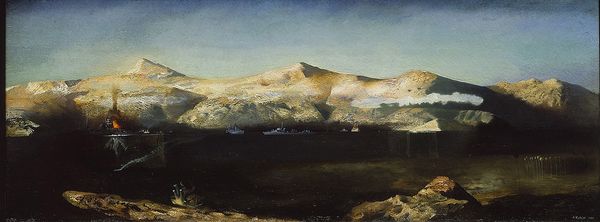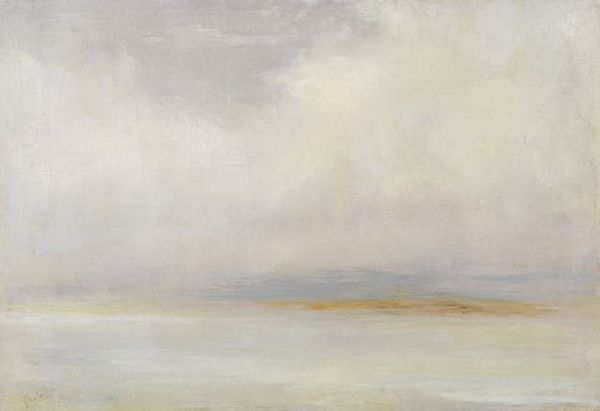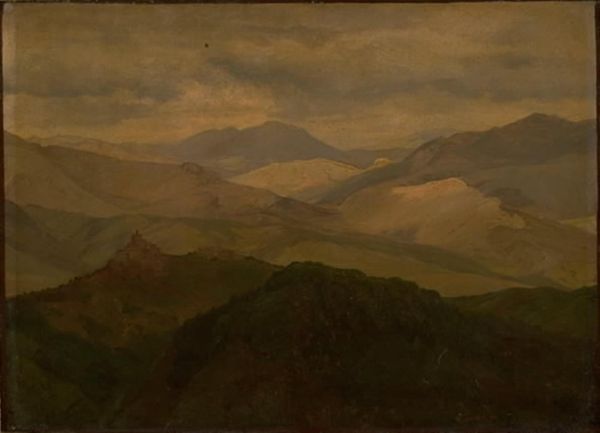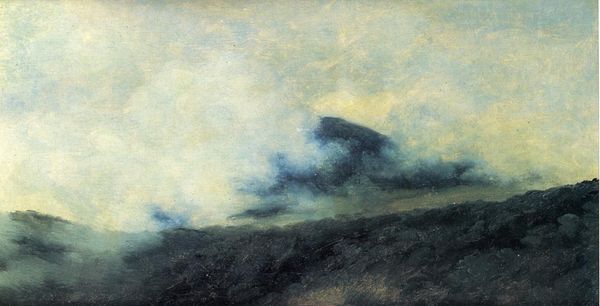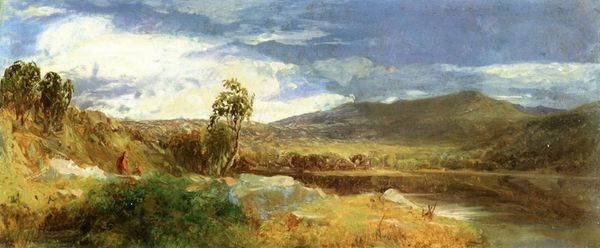
drawing, plein-air, pastel
#
drawing
#
sky
#
cliff
#
atmospheric-phenomenon
#
impressionism
#
plein-air
#
landscape
#
rock
#
cloud
#
men
#
pastel
#
watercolor
Dimensions: 55 x 68.2 cm
Copyright: Public domain
Editor: Jean-François Millet's "Puy de Dôme," created in 1870, is a beautiful landscape done in pastel. There’s such a somber, almost melancholic mood evoked by the muted colors. What are your thoughts as you look at this piece? Curator: The materiality speaks volumes. Pastel, as a medium, is crucial here. The quick, almost fleeting application mirrors the rapid changes inherent in both the landscape and the industrial revolution then underway. This wasn't some carefully laboured oil painting. The speed of pastel suited Millet's need to capture the moment. How do the materials impact your interpretation? Editor: I see what you mean. Because it’s pastel, it feels immediate, not overly polished or refined, which in a way mirrors a raw, unromanticized view of the landscape. I suppose I had assumed that landscape art was simply about depicting pretty scenes. Curator: Think about Millet’s background. He painted peasants and rural life. This isn't a wealthy landowner's picturesque view; it’s the landscape as experienced by the working class. Notice the subdued colours, reflecting the often harsh realities of rural existence, and consider what Millet's choosing to portray and omit in the scenery. Editor: It's almost like he's showing the means of agricultural production. It's a working landscape, not just something pretty. So the medium reinforces that context. Curator: Precisely. Pastel, for its accessibility, breaks from the traditional, expensive oil painting of the elite. Its immediacy challenges the preciousness often associated with "high art." How does considering the ease of transport and the relatively low cost of materials influence our reading? Editor: That is helpful. Seeing how the very nature of the pastel underscores the scene's reality and demystifies the artistic process. It moves landscape painting into a very different social sphere. Thank you! Curator: Absolutely. Materiality offers insight into social and historical contexts. Considering those aspects expands our view of the work significantly, wouldn’t you agree?
Comments
No comments
Be the first to comment and join the conversation on the ultimate creative platform.
